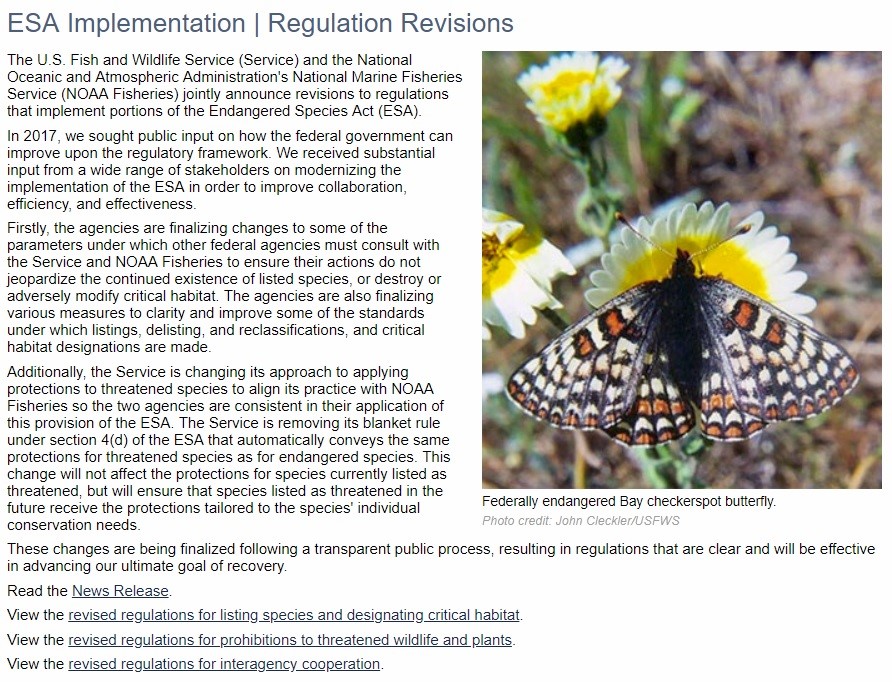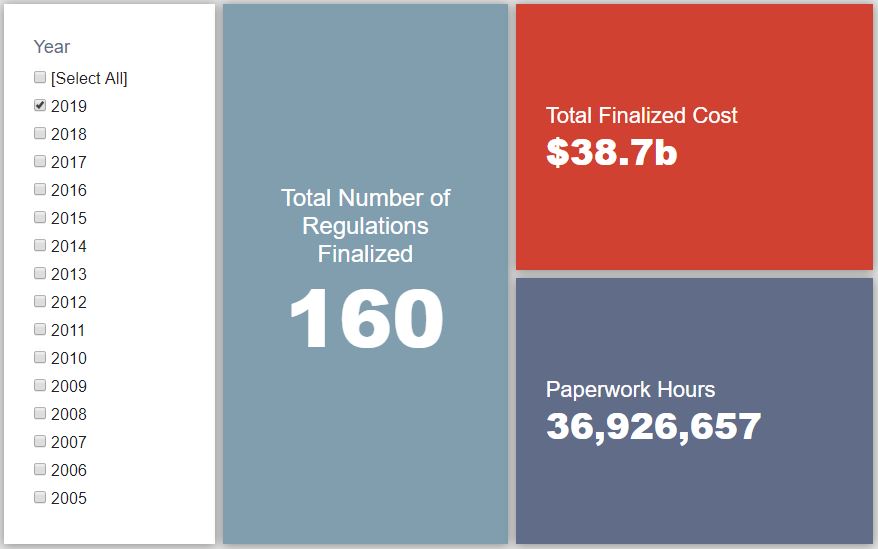Week in Regulation
August 19, 2019
Immigration Rule and Cigarette Labels Lead Busy Regulatory Week
With 22 rulemakings that had some quantified cost or saving estimate included, last week was a busy one in the regulatory world. One final rule out of the Department of Homeland Security (DHS) and one proposed rule out of the Food & Drug Administration (FDA) were the primary reasons for a net-regulatory week. Across all proposed and final rules, agencies published $1.2 billion in total net costs but cut 351,562 hours of paperwork.
REGULATORY TOPLINES
- New Proposed Rules: 52
- New Final Rules: 68
- 2019 Total Pages: 42,722
- 2019 Final Rule Costs: $38.7 Billion
- 2019 Proposed Rule Costs: -$1.1 Billion
TRACKING THE REGULATORY BUDGET
The most notable rule that affects the fiscal year (FY) 2019 regulatory budget under Executive Order (EO) 13,771 comes from DHS. That rule, regarding “Inadmissibility on Public Charge Grounds,” establishes further criteria for determining the legal status of immigrant and non-immigrant foreign residents based upon their current or potential utilization of public benefits. DHS estimates that the additional reporting costs for affected persons amounts to roughly $352 million over a 10-year period.
That rule, however, was not the costliest rulemaking of the week. That distinction goes to a proposed rule out of FDA. The FDA proposal seeks to update “Required Warnings for Cigarette Packages and Advertisements.” This would require cigarette producers to include “color graphics depicting the negative health consequences of smoking” on their packaging. While it does not yet count toward the EO 13,771 budget because of its status as a proposed rule, FDA estimates that updating cigarette packaging could cost roughly $985 million in present value.
The most notable deregulatory action of the week was also a proposed rule. This proposal, coming from the Coast Guard, would update “Person in Charge of Fuel Transfers” procedures. Essentially, the Coast Guard is seeking make the criteria of a “Person in Charge” on certain ships more flexible. This increased flexibility would apparently save affected operations roughly $250 million over a decade.
So far in FY 2019 (which began on October 1, 2018), there have been 58 deregulatory actions (per the rubric created by EO 13,771 and the administration’s subsequent guidance document) against 34 rules that increase costs and fall under the EO’s reach. Combined, these actions yield quantified net costs of roughly $11.8 billion. This total, however, includes the caveat regarding the baseline in the Department of Agriculture’s “National Bioengineered Food Disclosure Standard.” If one considers that rule to be deregulatory, the administration-wide net total is approximately $5.1 billion in net costs. The administration’s cumulative savings goal for FY 2019 is approximately $18 billion.
THIS WEEK’S REGULATORY PICTURE
This week, we highlight substantive revisions to Endangered Species Act (ESA) regulations.

The U.S. Fish and Wildlife Service and the National Marine Fisheries Service (the agencies) announced new rules this week that revise implementation of the ESA. The series of three deregulatory actions (shown in the screen capture above from the Trump Administration’s announcement of the rule) aim to protect endangered and threatened species as required by law, while reducing red tape that has come to be a calling card of the ESA process.
The main rule makes changes to the process of listing and delisting species and designating critical habitat. It establishes that when designating critical habitat, the agencies will fully evaluate the effectiveness of focusing only on areas the species currently occupies before considering unoccupied potential habitat. The goal of this change is to prevent a situation where land is unnecessarily prohibited from economic activity without benefit to the species in question, a charge sometimes made by those who argue the ESA is overly burdensome.
For similar reasons, the new rule also clarifies that listing a species does not necessarily require the federal government to designate critical habitat that has to be protected. Despite this clarification, the agencies indicate in the preamble to the rule that they only expect to use the authority in rare circumstances.
The second rule repeals the “blanket rule” issued in 1978. This blanket rule said that when any species is designated as “threatened,” these species are subject to the same protections as those designated as “endangered,” despite it being a less-dire designation. The new rule says that such protection will be determined on a species-by-species basis to prevent unnecessary prohibitions on economic activity. The blanket rule only applied to designations from the Fish and Wildlife Service, so its repeal brings it in line with what has been standard National Marine Fisheries Service practice. The third rule deals with improving coordination between the agencies.
TOTAL BURDENS
Since January 1, the federal government has published $37.6 billion in net costs (with $38.7 billion in finalized costs) and 42.5 million hours of net paperwork burden increases (with 36.9 million coming from final rules). Click here for the latest Reg Rodeo findings.












